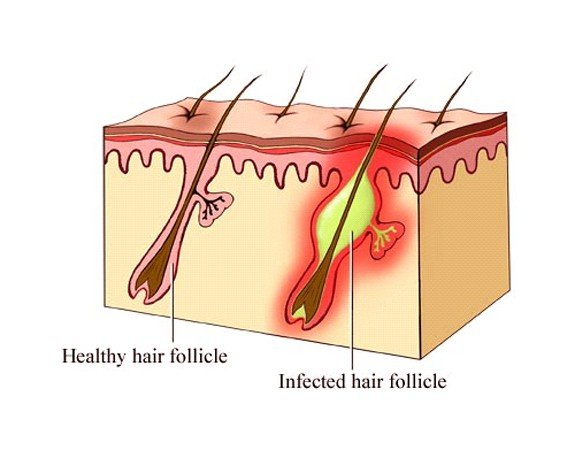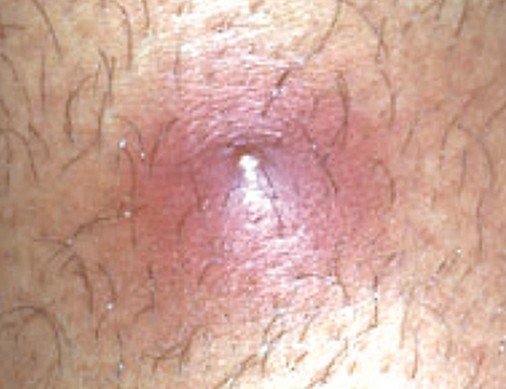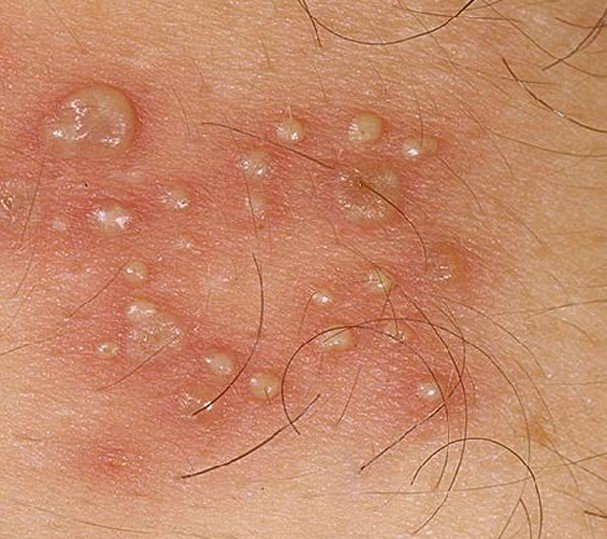Ingrown Hair
Last reviewed by Dr. Raj MD on January 12th, 2022.
What is Ingrown hair?
This is a situation where a hair on the human body curls or grows completely under your skin. They can appear anywhere on your body where you can grow hair. Ingrown hair can also vary in size. When a person has an ingrown hair it can cause swelling, scarring, or redness. When a person has an ingrown hair both ends of your hair follicle becomes trapped under your skin.
When this happens the hair will either bend, curl, or grow sideways. The medical term for ingrown hair is pseudofolliculitis barbae (PFB) also known as razor bumps. Having an ingrown hair is not a serious condition although they can be embarrassing and irritating. When a person has an ingrown hair they look like bumps on their skin that resembles pimples.
Sometimes when you have an ingrown hair it can form a boil-like sore that is painful. They can be itchy, especially if there are a lot of them in one place. You may even notice the hair that is causing the problem or pus in these bumps. In women you will see them mostly on their legs, armpits, and pubic area. In men you will see them on their cheeks, neck, or chin after they have shaved. You can even get ingrown hairs around the buttocks. Regardless of age, gender, or race anyone can get an ingrown hair.
Sometimes when a person gets an ingrown hair they could develop an infection of the hair follicle called folliculitis.
Causes of Ingrown hair
There are many different reasons why people would have an ingrown hair. Some of those causes can include:
- Having a high level of certain sex hormones can cause you to have excessive hair growth.
- Having coarse or very curly hair as this type of hair is more likely to bend back and re-enter your skin, especially after having it cut or after shaving.
- After shaving, tweezing, or waxing to remove the unwanted hair which when it grows back it has a sharper edge. This sharper edge can more easily poke back through your skin, causing it to become trapped under the skin.
- If during shaving a hair pushed under the skin or broken off but not removed.
- Having a hair that is passed over and not cut or removed can be pushed sideways under the skin that surrounds it. It will remain under the skin and not emerge.
- During shaving you press too tightly on your skin in order to have a cleaner or closer shave. If the skin is pulled too tightly it can sometimes call the hairs to be pulled sideways into your face, legs, armpits, etc when you are shaving.
- Using a double edged razor because the first blade will the hair out allowing the second blade to cut the hair.
- It can happen naturally because of too much dead skin debris is blocking the opening of the hair follicle which can cause the hair to start growing sideways.
- Aggressive or improper removal of hair.
Ingrown hair Treatment
Most of the time an ingrown hair will go away on its own but if it does not it can become infected and darken the skin permanently. If you have been picking at it or scratching it an ingrown hair can leave a scar. Having an ingrown hair is something that you can treat yourself but if it becomes infected or is bothering you, you may need to see your physician or dermatologist to have the ingrown hair removed. When you treat an ingrown hair you essentially want to remove the trapped hair so when you think of treatment, think of ways to remove an ingrown hair.
Ingrown hair Pictures
Removal of ingrown hair
There are many different ways that you can treat and remove an ingrown hair. If you visit your physician or dermatologist to have an ingrown hair removed they will usually use a scalpel or sterile needle to make a small cut in your skin in order to release an ingrown hair. They may also prescribe medication like:
- To help bring down the swelling that an ingrown hair can cause a steroid medication that you rub on your skin.
- Retinoids also referred to as Retin A to help reduce the skin pigment changes that can happen when you have an ingrown hair and also to help remove the dead skin cells.
- An antibiotic that you would either rub on your skin or take by mouth to treat the infection that was caused by an ingrown hair.
Some of the ways that you can remove an ingrown hair yourself include:
- Removing it with a sharp cosmetic tool like tweezers or a sterile pin. You would gently puncture the swollen skin with the sterile pin and then remove it from the ingrown position by pulling the end that is ingrown out through the small abrasion of your skin. When the ingrown hair is exposed you can pull it out with the tweezers.
- Use a product that contains the dermatological chemical salicylic acid to help moisturize and exfoliate your skin. The salicylic acid will help to clean out the pores where your skin grow and will also help to prevent infection from an ingrown hair. You can find this ingredient in many shaving creams, aftershaves, and moisturizers. You can also use it as a lotion to help remove an ingrown hair.
- Because an ingrown hair is similar to pimples you can apply a little acne medication on the ingrown hair several times a day for several days. You should also exfoliate the area daily. Doing both will help to remove an ingrown hair. If you do not have any acne medication you can use a little toothpaste instead.
- Apply a warm moist compress to an ingrown hair for a few minutes to soften the skin and help to bring the ingrown hair closer to the surface of your skin so you can remove it.
- Use a face brush or tooth brush with soft bristles to dislodge the tips of an ingrown hair. You put a little liquid cleanser on the area and gently rub the area in a circular motion. This will also help get rid of any dead skin cells so the hairs can grow outward.



